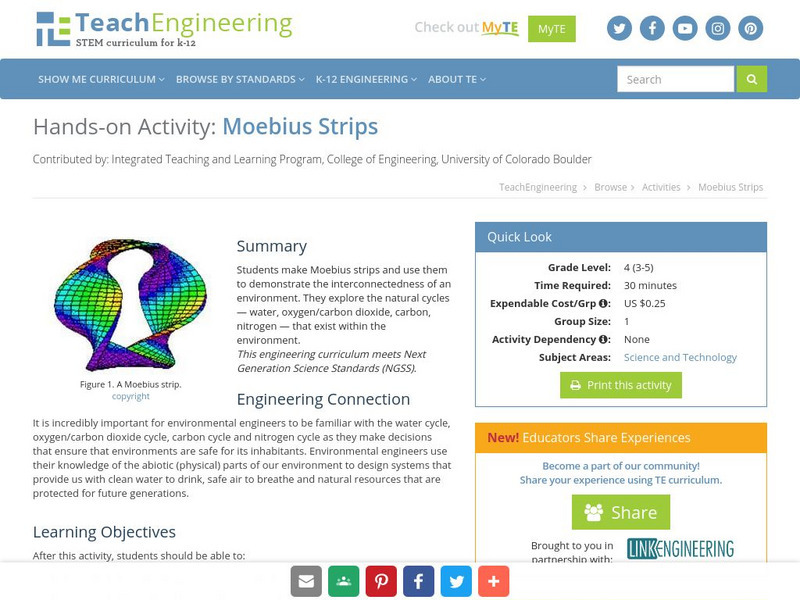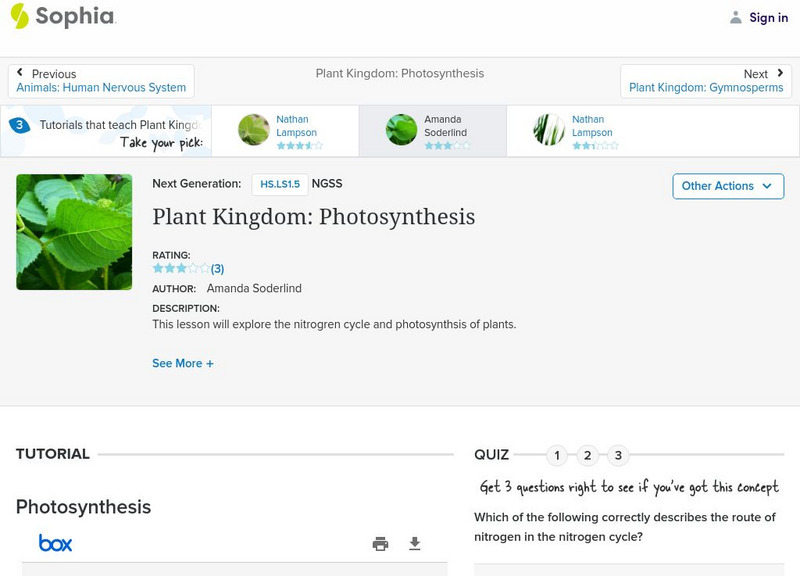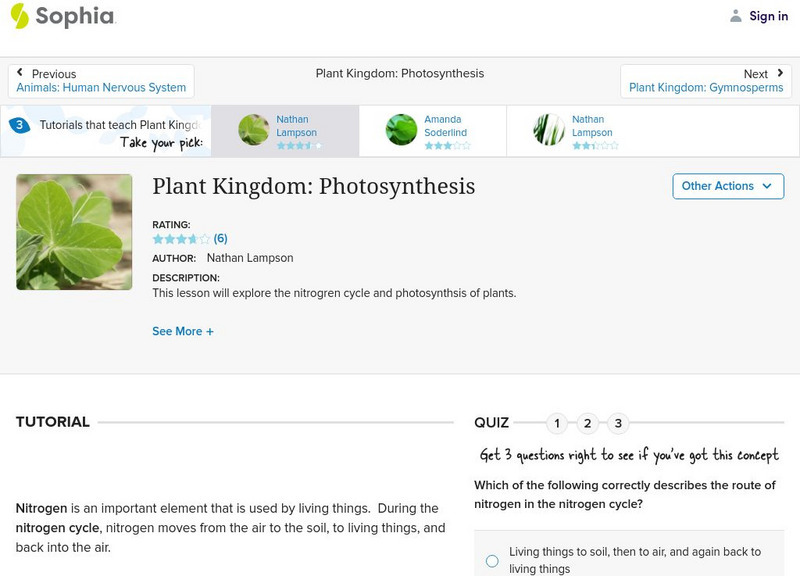TeachEngineering
Teach Engineering: Moebius Strips
In this activity, students make Moebius strips and use them to demonstrate the interconnectedness of an environment. They will explore the natural cycles (water, oxygen/carbon dioxide, carbon, nitrogen) within the environment.
OpenSciEd
Open Sci Ed: Net Logo: Chloroplasts and Food Model
The simulation shows the relationship between the inputs and outputs in the chloroplasts of plant, that can help explain how they convert water and carbon dioxide to glucose and water with the help of energy absorbed from light.
Science Museum, London
Science Museum: Climate Science Info Zone
Media-rich interactive explores Earth's climate, investigating what might be causing the climate to change and how to prepare for it in the future.
Other
Water on the Web
Water on the Web (WOW) is an advanced site allowing students to actively participate in data analysis from real research sites. Lesson plans on a range of topics are provided. There is also a tutorial for using Excel to graph WOW data.
King's Centre for Visualization in Science
Explaining Climate Change: Lesson 7: Climate Feedback Loops
This is the seventh lesson in a series of learning modules on the topic of climate change. In this lesson, you will learn how several important feedback loops help drive and regulate earth's unique climate system and affect climate...
BBC
Bbc: News: Guide to Climate Change
The BBC offers an interactive guide to climate change, including a sliding scale depicting climate change from 1885 to 2099, animation which explores how the greenhouse effect works, and detailed diagrams exploring the carbon cycle, the...
Sophia Learning
Sophia: Plant Kingdom: Photosynthesis: Lesson 2
This lesson will explore the nitrogren cycle and photosynthsis of plants. It is 2 of 3 in the series titled "Plant Kingdom: Photosynthesis."
Sophia Learning
Sophia: Plant Kingdom: Photosynthesis: Lesson 1
This lesson will explore the nitrogren cycle and photosynthsis of plants. It is 1 of 3 in the series titled "Plant Kingdom: Photosynthesis."
TeachEngineering
Teach Engineering: Environment
Through 10 lessons and more than 20 hands-on activities, students are introduced to the concept of an environment and the many interactions within it. As they learn about natural and human-made environments, as well as renewable and...
Other
College of Du Page: Energy in an Ecosystem
Ecosystems contain two kinds of commodities: matter (nutrients) and energy. Nutrients cycle through the ecosystem, available for repeated use by organisms. These cycles of use and reuse are called biogeochemical cycles. Energy instead is...









